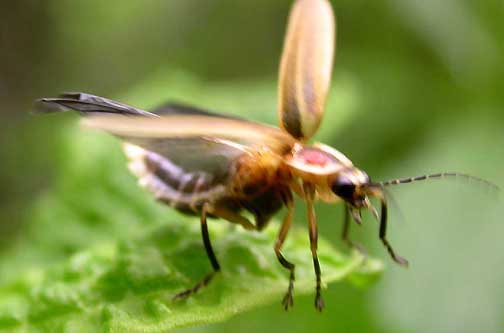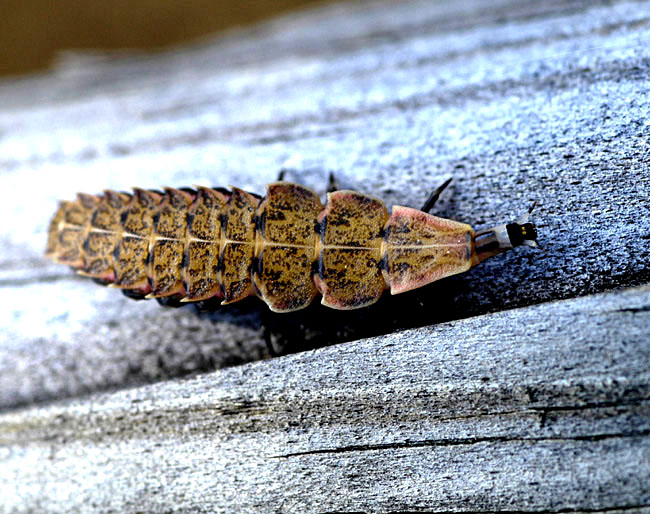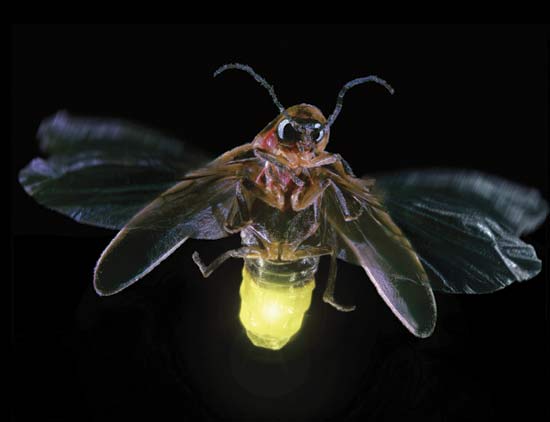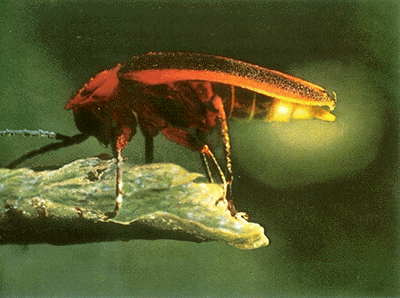|
FIREFLY |
||||
|
|
When people see flashing lights in the woods, in a field, or in a marsh, they are looking at fireflies. Worldwide there are over 1900 species of firefly and they are found on every continent except Antarctica. There are over 170 species found in North America alone, with most of them living in the eastern half of the continent. Fireflies are beneficial bugs. Not only are they one of the great wonders of nature, making our summer evenings more exciting, but they are also predators. When they are larvae (not yet adults) fireflies live on slugs, snails, earthworms and many different kinds of destructive insect pests. Firefly larvae hunt by following the trail of an earthworm, snail or slug. After locating their prey, they inject it with an anesthetic (a drug that causes loss of feeling) in order to stop their prey from running away. Then the firefly larvae can easily capture and eat their prey.
There is not too much known about what adult fireflies eat. They have mouths that are well designed to eat other bugs. However, some scientists think that adult fireflies feed on the nectar of plants and flowers. They could be both predators that eat other bugs and pollinators of plants. Because of the light that fireflies make at night they are very popular with people. There are all kinds of things named after them, artworks have been created showing fireflies at night, and there are popular songs about them. Poets have also written about the magic of the firefly. Robert Frost wrote in his poem "Fireflies in the Garden". The way that fireflies make light used to seem like magic to people and has fascinated scientists for years. Studying and understanding how fireflies make light has helped humans create many different beneficial products. Understanding the chemistry of firefly light resulted in our being able to create glow sticks. Glow sticks are important because they make light without getting hot. People can hold them and be seen by others in the dark - so they protect lives. Glow sticks are made using the same process or "light production system" as the firefly. Luciferin and luciferase are the chemicals that give fireflies their lights, and these are the chemicals that scientists copied when they invented glow sticks. Since being discovered in the firefly, these chemicals have also been used in medical research on such diseases as cancer and multiple sclerosis.
Fireflies have helped humans learn to make light without creating heat. This has benefitted people in many ways, from making glow sticks and toys that light up, to helping cure disease. WOW - the firefly is definitely a beneficial bug.
Identifying adult Fireflies during the day is
tricky. Fireflies are not really "flies".
They are beetles! Most
firefly species give off light when they are adults. Adult Fireflies
are quite small (about 1/3 to 1/2 inch or 10 mm long), and they have bodies that
are quite flat. They have flat
front wings that are black in color and an area right behind the head that is broad and black.
They also have two broad yellow stripes down either side their head. The last two segments of the abdomen
are pale yellow
color, indicating that this is the area of the body that produces light.
|






